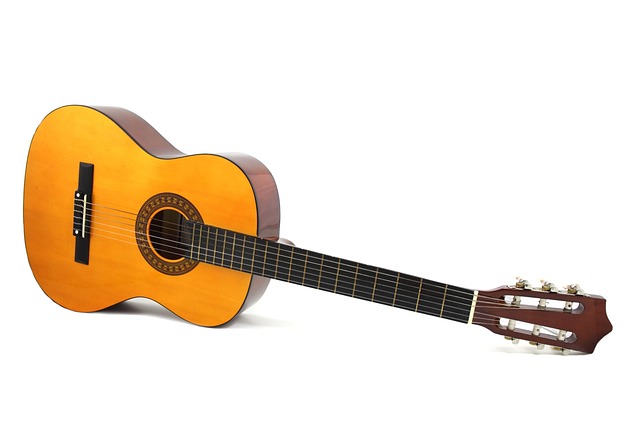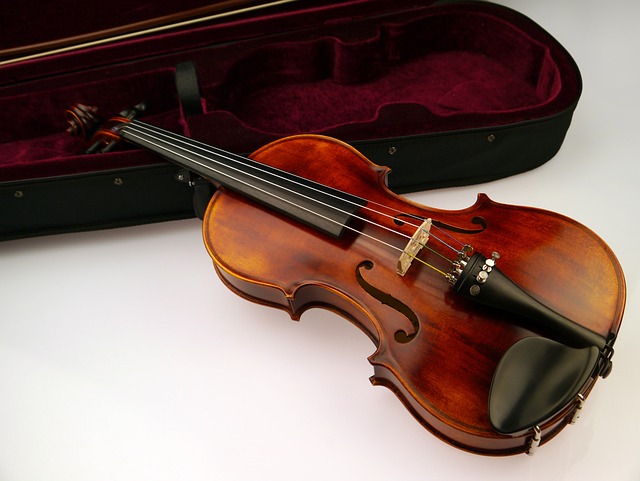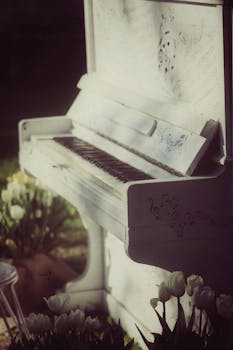Musical Instruments That Begin With Z
As an Amazon Services LLC Associates Program participant, we earn advertising fees by linking to Amazon, at no extra cost to you.
Cultural Significance in World Music
Exploring the deep-rooted connections between music, identity, and cultural expression across the globe.
- Music serves as a historical archive. It tells stories of people, events, and traditions, preserving heritage in a way that written records often fail to capture.
- Instruments are cultural symbols. Each instrument embodies unique characteristics that reflect the values, beliefs, and environments of different communities.
- Rituals and ceremonies often incorporate music. From weddings to funerals, the role of music in marking significant life events highlights its importance in communal and spiritual practices.
- Music fosters social cohesion. Collective music-making experiences, like drumming circles or choir singing, build bonds among participants, enhancing a sense of belonging.
- Global music genres continually evolve. Cross-cultural exchanges lead to new sounds and styles, reflecting an ongoing dialogue between different musical traditions.
- Music often becomes a form of resistance. Throughout history, artists have used their craft to challenge injustices, giving a voice to the marginalized and oppressed.
Zill: The Finger Cymbals of Middle Eastern Music
Zills, or finger cymbals, are an essential instrument in Middle Eastern music. These small, metallic cymbals are typically made of brass or bronze, and they create a piercing, clear sound that commands attention. I personally find them captivating, not just in their sound, but in the cultural significance they carry. Zills are often used in traditional dances such as the belly dance, enhancing the performance with their rhythmic clinking that complements the fluid movements of the dancer.
They are worn on the thumb and middle finger of each hand, allowing musicians to create complex rhythms with just a flick of the fingers. Playing zills requires practice; the technique is not as simple as it might seem. The ability to produce crisp, distinct tones while maintaining a steady rhythm is an acquired skill that adds layers to the overall musical experience.
One cannot underestimate the role of zills in ensembles. They provide a way to punctuate music, adding texture and dynamism to the soundscape. In my experience, their inclusion can transform a simple musical piece into a lively celebration. The interaction between zills and other instruments, such as the oud or an array of percussion, creates a rich tapestry of sound that resonates with audiences.
Different regions have their own styles of zills, showcasing the diversity of Middle Eastern music. Some zills are larger or have different tuning options, which can affect the sound. The craftsmanship varies as well, with some makers handcrafting them for unique resonance. Finding the right pair of zills can be a journey in itself, as each set has its own character and charm.
In conclusion, zills are not just an accessory for dancers; they are musical instruments steeped in tradition that bring a distinct flavor to Middle Eastern music. If you haven’t experienced their sound live, I highly recommend it—there’s nothing quite like the vibrant energy they inject into a performance.
Why Instruments Starting with Z Are Unique
In my experience, musical instruments that start with the letter Z exhibit a rare charm and character. The most notable among these is the zither, a stringed instrument revered for its rich, resonant sound. I find it fascinating how simple it seems; with no frets and only strings stretched over a flat surface, it encourages creativity and improvisation. The lack of a defined playing technique makes every performance uniquely personal. It truly speaks to the musician’s intuition.
Another captivating instrument is the zouk, although primarily associated with a style of music rather than a traditional instrument. This genre embodies the spirit of Caribbean rhythms and highlights how instruments like drums and guitars are used to create an immersive musical experience. Zouk represents the fusion of culture and sound, offering a glimpse into the musical narrative of its region.
In my exploration of less common instruments, I’ve also found the zurna intriguing. This woodwind instrument, known for its powerful sound, is quintessential in folk music traditions of Central Asia and the Middle East. The zurna’s distinctive tone cuts through the air, making it a staple in celebrations and cultural ceremonies. It’s not just an instrument; it’s a voice of the people.
Lastly, the influence of instruments starting with Z on global music cannot be overlooked. Zither music has found its way into classical compositions and modern soundtracks, captivating audiences worldwide. The ability of these instruments to transcend cultures and genres speaks volumes about their timeless appeal. Instruments like the zurna contribute to a powerful anecdote of how traditional music connects us, regardless of our origins.
Ultimately, the uniqueness of instruments beginning with Z lies not just in their sound, but in the stories they tell and the cultures they represent. Every note played on these instruments adds a layer to the ever-evolving tapestry of music. They remind us of the importance of history, innovation, and emotional expression in our shared musical heritage.
Features of Various Z Instruments
Explore the standout characteristics of a variety of Z instruments that musicians cherish.
- Zither: Its unique string and resonance chamber design creates a soothing blend of melodies, perfect for folk music enthusiasts.
- Zouave: This stringed instrument features a distinct set of frets and a bright tone, favored by players looking for a vibrant sound.
- Zarzuela: With its theatrical flair, zarzuela combines spoken dialogue with musical elements, engaging performers in a live storytelling experience.
- Zurna: Often used in Middle Eastern music, its double-reed construction produces a sharp, penetrating tone that cuts through ensemble noise well.
- Zheng: The zheng’s long history is reflected in its elegant design and rich harmonic capabilities, appealing to both traditional and contemporary players.
- Zobo: This African wind instrument, with a bright, clear sound, captivates audiences in various cultural performances and is known for its versatility in different music styles.
- Zingel: With its unique string placement, the zingel provides musicians with intricate harmonic possibilities, making it a favorite among experimental artists.
The Zobo: An Uncommon African Instrument
The Zobo, often overlooked, offers a unique approach to sound and rhythm that truly captivates. It is a wind instrument made from the leaves of the hibiscus flower, commonly used in various African cultures. While many might associate musical instruments with wood, metal, or plastic, the Zobo branches out into the world of nature with its organic materials. The vibrant color of the leaves gives the instrument its name, as ‘zobo’ refers to the tea made from the same plant.
Playing the Zobo requires a unique blowing technique, where the musician creates sound by vibrating their lips against the leaves, much like playing a traditional horn. This technique, combined with its natural properties, produces a sound that resonates with those who understand its beauty.
In various communities, the Zobo is often seen at celebrations, events, and festivals, where its lively tones uplift spirits and engage listeners. Learning to play the Zobo is both a creative and culturally immersive experience, allowing one to connect not only with the instrument itself but also with the rich traditions surrounding it. I find that the Zobo encapsulates the essence of collective joy, bringing people together through its vibrant sound. Overall, the Zobo stands as a testament to the rich musical traditions of Africa, showcasing how natural resources can transform into instruments that speak volumes about cultural heritage and community bonding.
Feb 27, 2023 … 1. Zambomba … Building upon the timeless sound of its predecessors, the zambomba is a captivating musical instrument that has been gaining …
Zaabia – A small gourd rattle of the Dagomba people. Ghana. żafżava – Maltese friction drum. Zambomba – Ancient friction drum made out of clay or wood, …
Zither. A folk instrument with 30 – 40 strings stretched over a flat, shallow, horizontal soundboard. The zither is played with a thumbpick* and with the tips …
Jul 21, 2019 …A zither is a musical instrument consisting of a flat wooden soundbox with numerous strings stretched across it, placed horizontally and played with the …
This is a list of musical instruments. Afghani guitar · Alghoza · Alphorn · Accordion · Bagpipes · Banjo · Banjo cello · Bass banjo · Five-stringed banjo.
List of musical instruments – Simple English Wikipedia, the free …
The Zither: A Versatile String Instrument
The zither is one of those instruments that captures the divine simplicity and complexity of string music all at once. Its versatility is unmatched, easily fitting into a variety of musical genres, from classical to contemporary folk. The instrument typically consists of a flat, shallow body and a series of strings stretched across it, making it accessible for musicians of various skill levels. What I love about the zither is its ability to blend seamlessly with other instruments. Whether paired with the haunting tones of a flute or the rhythmic pattern of a guitar, it enhances the overall sound, creating a rich tapestry of music.
Playing the zither can be a meditative experience. With the right techniques, a player can produce both melody and harmony, giving solo performances a full-bodied sound. This instrument encourages improvisation, allowing musicians to express their creativity in real-time. Beginners can find joy in its straightforward playing method, while experienced players can dive deeper into complex compositions. The tuning and string arrangement can also be personalized, giving it a unique voice that resonates with the player’s personality.
The zither’s cultural significance cannot be overlooked. Originating from Central Europe, it has played an integral role in traditional music and remains a popular choice for folk ensembles. The sound evokes emotion, often taking listeners on a journey through poignant memories or tranquil landscapes. Its design, both beautiful and functional, serves as a testament to craftsmanship and musical heritage. As someone who appreciates the breadth of musical instruments, I find the zither to be a profound example of how a single instrument can encapsulate so much history, culture, and versatility.
Exploring the Zurna: The Traditional Wind Instrument
The zurna, often misconceived as just another folk instrument, stands as a powerful symbol of cultural heritage in various regions, particularly in the Middle East and Central Asia. It’s characterized by its distinctively loud and piercing tonal quality, which makes it an exceptional choice for outdoor festivities and celebrations. With its conical shape and double-reed mouthpiece, the zurna produces a sound that can cut through noise, making it a favorite for shepherds and musicians alike.
A major facet of the zurna is its versatility. Whether played solo, in a duet, or as part of a larger ensemble, it retains a unique character that combines perfectly with percussion and string instruments. Additionally, it plays a vital role in traditional music, particularly in weddings, religious ceremonies, and cultural festivals.
Understanding the construction of the zurna reveals much about its design and function. It’s usually made from wood, although some modern iterations use plastic. The wood selected often influences the instrument’s tonal quality—options like the common elder or juniper lend different timbres and resonance. The range of the zurna is impressive, typically spanning over two octaves, allowing musicians a broad palette for melody creation.
Performance on the zurna requires both skill and breath control. Mastering the embouchure—the way you shape your mouth around the reed—is crucial for producing a clear, strong sound while navigating the intricate melodies typical in traditional music. I’ve found that the zurna challenges me in ways that other instruments don’t; its demanding nature fosters a deeper connection to the music I play.
For anyone considering exploring the world of traditional instruments, the zurna is a compelling choice. Not only does it embody centuries of history and culture, but it also offers a unique sonic experience that is both exhilarating and inspiring. My journey with the zurna has been transformative, opening new avenues in my musical expression and appreciation.
Sep 5, 2022 … … started sending out “Weeklies,” emails to the campus and … musical instruments and belongings. We grooved to our own “America …
Travels with Big Sis T and Little Sis Z Across America – Running the …
University Fee List Toggle University Fee List navigation. FAQ. Courses. MUS-Z 105: TRADITIONS IN WORLD MUSIC (3 credits) … instruments, musical meaning …
Aug 1, 2024 … … music resources for your upcoming performances, papers and projects. Getting Started · Music Reference · Finding Articles · Scores · Streaming …
Music Databases A to Z – *Music Research – Research Guides at …
Musical instruments. I. Title. II. Series: Smithsonian Institu- tion … I always started right away with the prac- tical side, first in singing and …
Understanding the Zamponas: Panpipe Variations
The zampona, also known as the panpipe, is a fascinating wind instrument with countless variations that capture different cultural essences. Originating from the Andean region, these instruments typically consist of multiple pipes made of cane, bamboo, or other materials, each differing in length to create distinct pitches. My fascination with zamponas began when I stumbled upon a performance that showcased not just the music but the cultural history woven into each note.
The basic construction includes two sets of pipes: the larger pipes produce deeper tones while the shorter ones yield higher pitches. What sets each zampona apart is its tuning and the specific cultural influences of its region. For instance, the traditional Peruvian zampona (or ‘zampoña’) has a rich, mellow sound that contrasts with the sharper, more penetrating tones of the Bolivian versions. Each region has its preferred materials, influencing not only the timbre but also the aesthetics of the instrument.
I’ve found that experimenting with different types of zamponas can radically change a performance. The smaller, higher-pitched versions often require more finesse and breath control, while larger sizes allow for a richer harmonic foundation. There’s an undeniable joy in playing a zampona that’s suited to one’s skill level; I personally prefer the more challenging designs as they push me to refine my technique.
The number of pipes can vary charmingly; some zamponas are seen featuring a simple arrangement of 5 to 10 pipes, while others boast content-heavy creations with over 20 pipes. This broad range makes for an incredibly versatile instrument capable of producing complex melodies and harmonies. Each unique configuration brings out different aspects of the music, allowing for a variety of styles, from haunting folk tunes to lively celebrations.
Playing with a group can be electrifying, where the blending of different zampona types creates a beautiful tapestry of sound. The experience truly highlights how interconnected these instruments are within their cultural contexts. As each musician breathes life into the pipes, a stark contrast emerges between solo play and ensemble performances, emphasizing the communal nature of this instrument.
Popular Z Instruments Around the World
These instruments may showcase a lesser-known yet significant appreciation across various cultures. Here’s my take on some incredible Z instruments that stand out globally.
- Zurna – A traditional woodwind instrument commonly found in Turkey and the Middle East. I’m captivated by its sharp sound and its role in folk music, often accompanying weddings and festivals.
- Zhonghu – A Chinese string instrument that resembles the viola. Its deep, haunting tones create an emotional depth that resonates with audiences, especially in traditional Chinese ensembles.
- Zither – An ancient instrument with a rich history, especially in Central Europe and Asia. The strings’ plucking invites a warm, resonant sound that’s simply enchanting.
- Zanbaty – This Mongolian string instrument is fascinating to me due to its unique construction and versatile sound that can evoke both joy and melancholy.
- Zhaleika – A traditional wind instrument from Russia that produces a soulful, throaty sound, often found in folk music. I admire its rustic charm and how it connects to cultural storytelling.
Zenith of Innovation: Electric Instruments Starting with Z
Electric instruments beginning with the letter Z demonstrate the forefront of technology’s influence on music. Instruments like the Zildjian electric cymbals and the Zoom multi-effects pedals are perfect examples. Zildjian, renowned for its traditional acoustic cymbals, has innovated with electric versions that incorporate digital technology without losing the essence that drummers adore. The manipulation of sounds through Zildjian’s electric options introduces fresh textures and tones that you simply can’t achieve otherwise.
Moreover, the Zoom line of effects pedals has revolutionized how musicians interact with sound. These pedals are essential for any electric guitarist or bassist wanting versatility. With multiple effects available, including distortion, delay, and modulation, they allow for an unparalleled level of customization in sound crafting. Artists can generate complex tones suitable for various genres, making them an indispensable part of an electric musician’s toolkit.
Another noteworthy mention is the Zeta violin, an instrument designed for the modern musician. Zeta violins blend traditional craftsmanship with electric amplification, allowing players to explore a wide range of sonic possibilities. This fusion is perfect for anyone crossing genres from classical to contemporary. The amplified sound enhances projection, ensuring that the nuances of playing are not lost in performance settings.
Lastly, let’s not forget about the growing realm of digital audio workstations (DAWs) and software synthesizers beginning with Z, such as Zebra. Zebra, by u-he, is an innovative synthesizer that offers rich sound design capabilities. It gives musicians control over every aspect of sound shaping, pushing creativity to unprecedented levels. Together, these electric instruments challenge traditional expectations and offer fresh avenues for musical expression.
What are some unique features of the zither?
The zither is a captivating instrument, distinct for its flat, rectangular shape and multiple strings that lay over a hollow body. Unlike many string instruments, it does not require a bow or fretting technique, allowing for a more straightforward approach to playing. The performer plucks the strings with their fingers or a plectrum, which produces a unique, resonant sound that can evoke various emotions. Zithers typically come equipped with a variety of strings tuned to different pitches, making them versatile for both melody and harmony. This complexity allows musicians to explore a range of musical styles, from folk to classical. Additionally, the zither often features distinctive sound holes which enhance its tonal quality, giving it a warm resonance that is immediately recognizable. The zither’s portability and relatively simple construction make it an accessible choice for musicians at any level. Its cultural significance spans many regions, further enriching its musical legacy.
How is the zurna played and what music styles does it belong to?
Playing the zurna requires a good breath control and specific finger techniques. This double-reed woodwind instrument is held vertically and employs circular breathing, allowing the musician to play continuously without interruption. With a range typically covering over two octaves, the zurna stands out for its sharp, penetrating sound, which can be both invigorating and emotive. The music styles associated with the zurna include traditional folk music and celebratory genres. It’s prevalent in the Middle East, Central Asia, and parts of Eastern Europe, often accompanying dances, weddings, and festivals. The zurna is a vital component of various regional ensembles, blending seamlessly with percussion instruments like the davul or the daire, enhancing the overall festive atmosphere. Its distinctive tones resonate well with the vibrant rhythms often found in these music styles, making it an irreplaceable instrument in cultural expressions.
What are zamponas and how do they differ from other wind instruments?
Zamponas are traditional wind instruments originating from the Andean regions of South America. Typically made from a series of bamboo tubes, zamponas produce a warm, rich sound that captivates audiences. The instrument consists of two rows of pipes that are tied together, and players blow across the open ends to create notes. What sets zamponas apart from other wind instruments like flutes or clarinets is their unique construction and sound production method. While flutes create sound through an air column and reeds like in clarinets vibrate to produce sound, zamponas rely on the tubular length and thickness to determine pitch. Zamponas also embody cultural significance, often associated with festivals and indigenous music, which adds layers of connection beyond just their musical capabilities. Their distinctive drone sound, often complimented by other traditional instruments, creates a mesmerizing auditory experience.
Can you name some famous songs that feature instruments starting with Z?
The most notable instrument starting with ‘Z’ is the zither. A classic example is the song “Killing Me Softly with His Song” performed by artists like Roberta Flack and Lauryn Hill, which features the soothing sounds of the zither beautifully complementing the vocals. Another iconic mention is the use of the zither in the soundtrack for the movie “The Third Man”. The haunting zither melodies crafted by Anton Karas have become legendary, leaving a lasting impact on film music. One can also find the zurna, a traditional Middle Eastern woodwind, in songs like “Syrtaki” from the film “Zorba the Greek”. Its distinct sound adds a rich cultural flavor to the music. These tracks not only showcase the zither’s unique qualities but also highlight how instruments beginning with ‘Z’ can create unforgettable auditory experiences.
Are there any modern interpretations of traditional Z instruments?
Absolutely, traditional Z instruments are being reimagined in numerous ways today. Take the kalimba, for instance. While rooted in African culture, modern versions incorporate electronic elements, allowing for amplified sound and integration with other instruments. Similarly, the oud, a Middle Eastern ancestor of the guitar, has seen variations that adapt its body shape and string material, making it versatile for contemporary genres.
In the realm of percussion, traditional drums are being fused with digital pads and triggers, creating unique soundscapes that maintain cultural significance while appealing to modern musicians. These reinterpretations not only preserve the essence of the original instruments but also expand their boundaries, enriching the musical experience. Collaborations between traditional and modern artists showcase these adaptations, blending traditional melodies with cutting-edge styles, leading to innovative compositions.
Instruments like the zither and the zazou stand out with their distinctive timbres. Each offers a sound that can’t be replicated by mainstream instruments, making them a fascinating choice for anyone eager to explore unconventional music.
Many Z instruments possess fascinating cultural histories that enrich their significance. From the ancient origins of stringed instruments to the unique adaptations in various regions, each piece tells a story. These diverse backgrounds elevate the instruments beyond mere tools for music; they are vessels of tradition and expression.
**Exploring Z instruments pushes my creative boundaries**. Each new sound enhances my skill set, allows experimentation, and **opens my ears to diverse music styles**. It’s exhilarating to incorporate unusual timbres into my performances, enriching my artistry immensely.
Familiarity with a range of instruments expands your musicality. Each instrument offers unique techniques and sounds, boosting creativity. Personally, I’ve found that switching between guitar, piano, and drums enhances my songwriting and improvisation skills. It’s a game changer.
Z instruments, like the zither or the kazoo, rarely find their way into mainstream music. This oversight deprives artists and audiences of unique tones and rich textures that these instruments offer.
As an Amazon Services LLC Associates Program participant, we earn advertising fees by linking to Amazon, at no extra cost to you.







